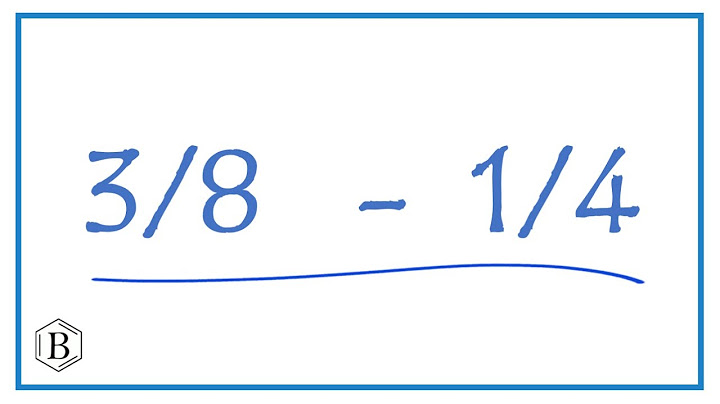You may wonder whether the spotting you see at the midpoint of your cycle is ovulation bleeding or something else. If you’ve done any Googling, you’ve seen this form of spotting referred to as mid-cycle bleeding, ovulation spotting, and intermenstrual bleeding. Show
But what is it — and what does it mean? Ovulation bleeding is somewhat common and usually nothing to fret about. Most of the time, it’s a sign your menstrual cycle is working as it should. What does it mean when you bleed during ovulation?Ovulation bleeding happens shortly after ovulation in the middle of your cycle, about 10 – 16 days after your period. It’s due to a rapid surge of the hormone estrogen at ovulation, followed by a swift plunge in estrogen. That said, other factors besides a dip in estrogen may cause mid-cycle bleeding, which we’ll get to. Is it normal to spot during ovulation?It’s somewhat common, occurring on a more or less regular basis in up to 9% of healthy, menstruating women — although a 2012 paper found it occurred in just 4.8% of women during the study period, which covered two menstrual cycles. One leading OB/GYN told Medscape she sees ovulation bleeding fairly often — in 10 – 30% of menstruating women in clinical practice. (There’s frustratingly little research on the menstrual cycle, and clinical research represents a snapshot in time of a sample of women, making it difficult to say how common ovulation bleeding is with any degree of certainty.) What causes ovulation bleeding?To understand it, we first need to backtrack to the process of ovulation. Ovulation, which lasts a few minutes or hours, is triggered by a cascade of hormonal responses in your body. Estrogen is one of the most critical hormones in ovulation. Estrogen is low at the beginning of your cycle, around the time you have your period. Then it rises through the first part of your cycle, eventually reaching a peak where it signals the release of luteinizing hormone, which tells the ovaries to release an egg. With a surge of luteinizing hormone comes a sharp plunge in the level of estrogen. The swift drop in estrogen destabilizes the endometrium, the lining of the uterus, and may cause a bit of the lining to shed. When your entire endometrium sheds, that’s how you have a period. But just a bit of shedding leads to ovulation bleeding. Is ovulation bleeding healthy?Research in the American Journal of Epidemiology found higher levels of estrogen, luteal progesterone, and luteinizing hormone (LH) around ovulation in regularly menstruating women who experienced mid-cycle ovulation spotting. In this sense, consider ovulation bleeding a sign your hormones are working as they should. How can I tell it’s ovulation bleeding?There’s probably no definitive way to know if the bleeding is due to ovulation or another cause, but that doesn’t mean you can’t hunt for clues to understand what’s happening. Check to see whether the bleeding is accompanied by signs of ovulation, such as:
Experiencing some of these signs and ruling out other potential causes of mid-cycle spotting may help to confirm that the bleeding is related to ovulation. If you don’t see these signs, then mid-cycle spotting could be due to one of the following reasons:
What is the color of ovulation bleeding?It’s different from period bleeding. It was described as small amounts of clinically evident bleeding or blood-stained discharge in a widely used doctor’s manual called UpToDate®. Typically, it’s reddish, brown, or pink in color. How long can ovulation bleeding last?It’s brief. It lasts 12 – 72 hours at most, unlike a period, where your flow may last up to a week, although 4-5 days is considered “normal.” Does ovulation bleeding happen before or after you ovulate?It usually appears very shortly after ovulation. The bleeding is triggered by a sharp drop in estrogen after the release of an egg. You may also experience other signs of ovulation (rise in BBT, fertile cervical fluid) around this time in addition to bleeding or spotting. Can ovulation bleeding be heavy?It’s not like your typical period. Instead, it’s more accurately described as spotting. It may be so light that you only notice it when you wipe after using the bathroom, or it may be a trickle that requires wearing a menstrual product. When a research team investigated the menstrual cycle, they defined ovulation spotting as a light flow that required a sanitary pad. Can I spot during ovulation without realizing it?Yes—sometimes it can be virtually undetectable. Scientists called this “occult ovulation bleeding.” Occult, in this case, doesn’t refer to witchcraft, but instead means hidden from the eye. Up to 90% of menstruating women may regularly experience occult ovulation bleeding, according to an old, but still widely referenced paper in the doctor’s manual UptoDate. In these cases, the only way to identify it is by analyzing a vaginal swab in a lab. Is ovulation bleeding a good sign when you’re trying to get pregnant?It may be a plus if you’re trying to conceive. A 2012 study linked mid-cycle bleeding to ovulation, noting that women with mid-cycle bleeding were not anovulatory. Being anovulatory means you did not ovulate, which is something you don’t want if you’re trying to get pregnant. (Even if you’re not TTC, ovulatory cycles are an important part of women’s health for women who aren’t on hormonal birth control.) Is ovulation spotting a sign of pregnancy?Ovulation spotting isn’t a sign you are pregnant. Ovulation happens earlier in your menstrual cycle, while implantation happens 8 – 10 days after ovulation. You’ve likely heard lots of chatter about implantation bleeding, a phenomenon that supposedly occurs as the blastocyst attaches to the uterine lining, but ovulation bleeding isn’t an implantation symptom. Science has largely debunked implantation bleeding. A prospective study looking at early pregnancy in 221 women found no evidence of implantation bleeding, instead noting that most luteal phase spotting in conceptive cycles occurred 5 days after implantation. The luteal phase is the stage of your cycle after ovulation. Bleeding in this phase occurs more frequently in cycles when a woman is not pregnant (and can sometimes be a sign of luteal phase defect, which may make it harder to conceive). In the vast majority of cases, this bleeding is unrelated to implantation. Instead it’s due to declining levels of progesterone, the hormone that maintains the uterine lining. The dip in progesterone triggers the beginning of your period. A few days before your period is due, progesterone levels can start to slide, and this might lead to light bleeding or spotting prior to your period. What’s the difference between ovulation spotting and a period?Ovulation bleeding is a much lighter flow than menstrual bleeding, which is heavy enough to require a pad, tampon, or menstrual cup. The typical period produces a total blood loss of 2 – 3 tablespoons, while ovulation spotting causes little measurable blood loss. Ovulation bleeding is more fleeting than your period. A period lasts about five days, but ovulation bleeding, in contrast, is just a few days at most. This is why it’s super helpful to track your cycle. If you know when you ovulated, you’ll be able to figure out whether the bleeding is due to ovulation, or if it’s a sign your period is due shortly, or something else. Consider trying one of a variety of methods to track your cycle if you’re not already. By Nicole Knight | Jan 29, 2020 View sourcesDasharathy, SS, Mumford, SL, Menstrual Bleeding Patterns Among Regularly Menstruating Women, American Journal of Epidemiology, 2012. Harville, EW, Wilcox, AJ, Vaginal Bleeding in Very Early Pregnancy, Human Reproduction, 2003. Belsey, EM, Farley, TM, The Analysis of Menstrual Bleeding Patterns: A Review, Contraception. 1988. Bromberg, YM, Bercovici, B, Occult Intermenstrual Bleeding About the Time of Ovulation, Fertility and Sterility, 1956.  Nicole KnightNicole Knight is a California-based freelance healthcare writer and award-winning journalist. Her bylines have appeared in the Guardian, Los Angeles Times, and Rewire.News, among others. She is a member of the Association of Health Care Journalists and the American Society of Journalists and Authors. Find her on Twitter @nicolekshine. Does ovulation spotting mean pregnancy?While many specialists believe mid-cycle bleeding is a sign of fertility, it doesn't necessarily indicate pregnancy. Brown spotting mid-cycle may indicate ovulation, which is when conception is most likely. If spotting between periods comes with pain or cramping, it may indicate an underlying problem.
What does ovulation bleeding look like?During ovulation, you shouldn't notice a regular flow of blood. Ovulation spotting is usually light spotting at most: one or two drops at a time. Ovulation bleeding shouldn't warrant tampon use.
How do I know if this is implantation bleeding?Signs of implantation bleeding. Color. Implantation bleeding is more likely to be a pinky-brown color. ... . Strength of flow. Implantation bleeding is usually super-light spotting. ... . Cramping. Cramping that signals implantation is usually light and short-lived. ... . Clotting. ... . Length of flow. ... . Consistency.. How many days after ovulation is spotting?Implantation usually occurs about 10 days after ovulation. Some people experience light spotting, called implantation bleeding, around this time.
|

Advertising
LATEST NEWS
Advertising
Populer
Advertising
About

Copyright © 2024 en.idkuu.com Inc.












